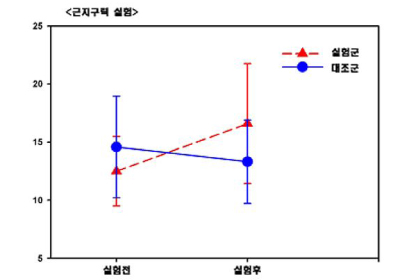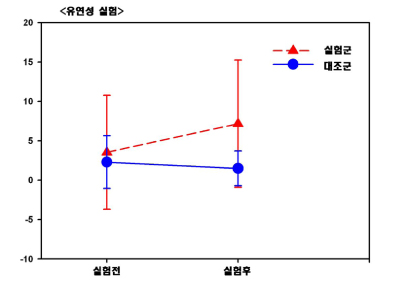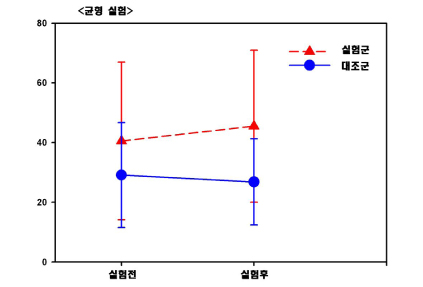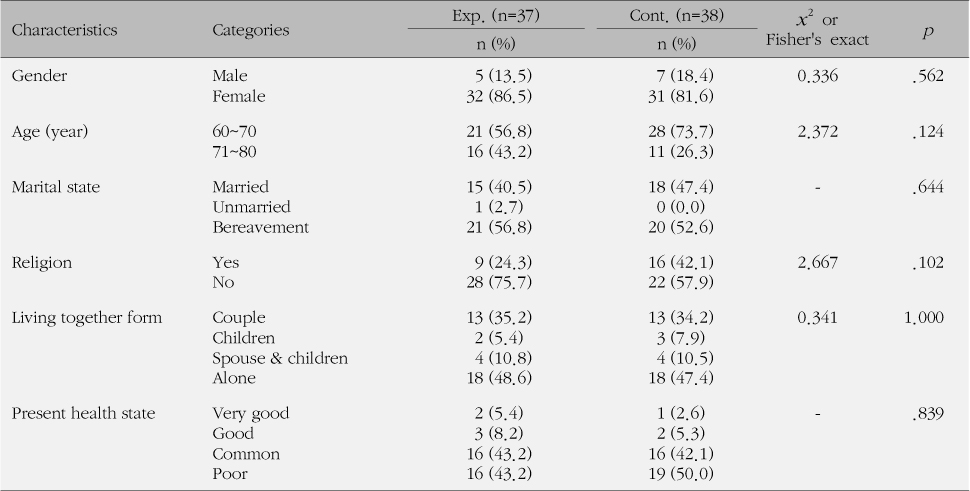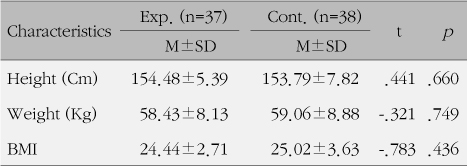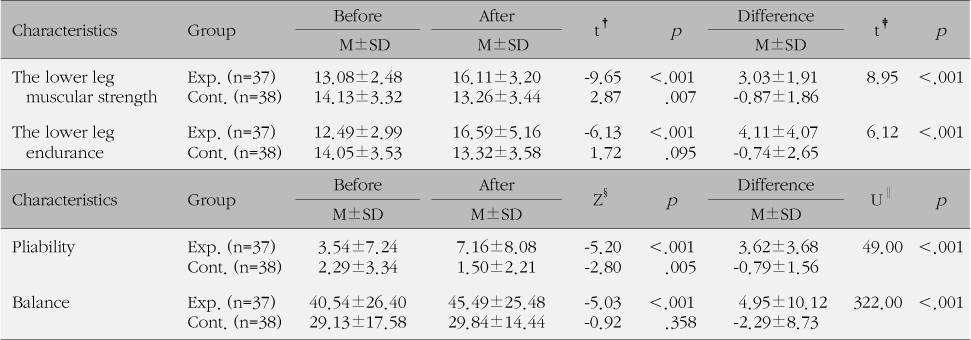References
1. Cho SB. Effects of the regular exercise program on the physical fitness of 60's for age. Korean J Phys Educ 1995;34(2):277–285.
2. Cho SY, Kim JJ. A study on health promotion needs assessment of the rural elderly in korea. J Korea Community Health Nurs Acad Soc 1996;10(2):146–161.
3. Choi JH, Moon JS, Song JY. The effects of tai chi exercise on physiologic, psychological functions, and falls among fall-prone elderly. J Rheumatol Health 2003;10(1):62–76.
4. Choi SK. The study of the effects of silverobic exercise program on physical functions and powerlessness in elderly women Seoul: Ewha Womans University; 2002. Unpublished master's thesis.
5. Han SS, Kim KB, Kim WO, Won JS, Hyun KS. The Effects of a Health Promotion Program for Elderly. J Korean Acad Nurs 2005;35(6):1054–1061.
6. Jang NS. The effect of regular participation in the exercise program on their physical fitness and mental health in the elderly. Korean J Growth Dev 2008;16(2):215–223.
7. Jun MY. Dance movement affects in physiology and psychological variable of the elderly woman Seoul: Seoul National University; 1996. Unpublished master's thesis.
8. Jeon MY, Choi MY. Dance movement affects in physiology and psychological variable of the elderly woman. J Nurs Acad Soc 1996;26(4):833–852.
9. Jeon MY, Choi MA, Choi YL. Effect of korean traditional dance movement training on balance, gait and leg strength in home bound elderly women. J Korean Acad Nurs 2000;30(3):647–658.
10. Jung DS, Kim KH. The assessment of activity fitness age in elderly men. 2001 International Congress on Growth and Development 2001. p. 18–26.
11. Kauffman TL. Strength training effect in young and aged women 2nd edth ed. Illinois: Human Kinetics Publishers; 1985.
12. Kim DH. Effect of exercise prescription program on adult's knowledge related to health, attitudes, behaviors, and serum lipoprotein values. J Korean Soc Health Educ Promot 2001;16(1):127–135.
13. Kim HJ. The effect which the muscular power reinforcement motion of reaches in quality of life of muscular power, muscular endurance, daily life function in the facility elderly Seoul: Seoul Catholicism University; 1994. Unpublished doctoral dissertation.
14. Kim JH. The effect of aerobic rhythmical exercise program on physical fitness, self-efficacy and quality of life in elderly. J Korea Community Health Nurs Acad Soc 1999;14(1):12–25.
15. Kim KS. The effects of with aroma therapy on the body composition in middle aged women. Korean J Sport Sci 2003;14(1):9–17.
16. Kim MJ. The rhythm motion program development for the body balance of in the elderly. Korean J Res Gerontol 1997;6:3–18.
17. Kim SB. Sports and health Seoul: Naeha Publishing Company; 1998.
18. Kirkendall DR. Measurement & evaluation for physical educators. Arch Phys Med Rehabil 1987;66:223–226.
19. Korea statistical Information Service. 2005 report on the Elderly statistics, 2007 2007. Retrieved August 2, 2007. from
http://www.Kosis.go.kr.
20. Lee ES. The effect of integrated exercising prescription program for old people in their 60s and 70s on their physical strength, heart and lung function, physical and blood components Seoul: Chung-an University Department of Physical Education; 2006. Unpublished doctoral dissertation.
21. Lee EY, Lim RY, Park HY. Nursing medical research and statistical analysis. Vol 3 Seoul: Soomoonsa Publishing Company; 1998.
22. Lee SJ. An application effect of rhythmic movement program for the health promotion in the elderly. J Korean Acad Nurs 2000;30(3):776–790.
23. Park JS, Oh YJ. The effects of a health promotion program in rural elderly on health promotion life style and health status. J Korean Acad Nurs 2005;35(5):943–954.
24. Rider RA, Daly J. Effects of flexibility training on enhancing spinal mobility in order women. J Sports Med Phys Fitness 1991;31(2):213–217.
25. Shephard RJ. Geriatric benefits of exercise as on adult. J Gerontol 1988;43(4):M86–M90.
26. Shin YH, Choi YH. The effect which reaches in pliability in elderly women. J Nurs Acad Soc 1997;26(2):372–386.
27. Simmons V, Hasen PD. Effectiveness of water exercise on postural mobility in the elderly. J Gerontol A Biol Sci Med Sci 1996;51(5):M233–M238.
28. Song R, Jun KJ, No YJ, Kim CG. The motive reinforcement program affects in healthy act, the heart and soul tube diseased dangerous vip and functional health condition of the old age woman. J Korean Acad Nurs 2001;31(5):858–870.
29. Won CW, Kim BS, Choi HL. The effect of tai chi (9 basic forms) on the equilibrium in the aged: A controlled trial. J Korean Acad Fam Med 2001;22(5):324–333.


